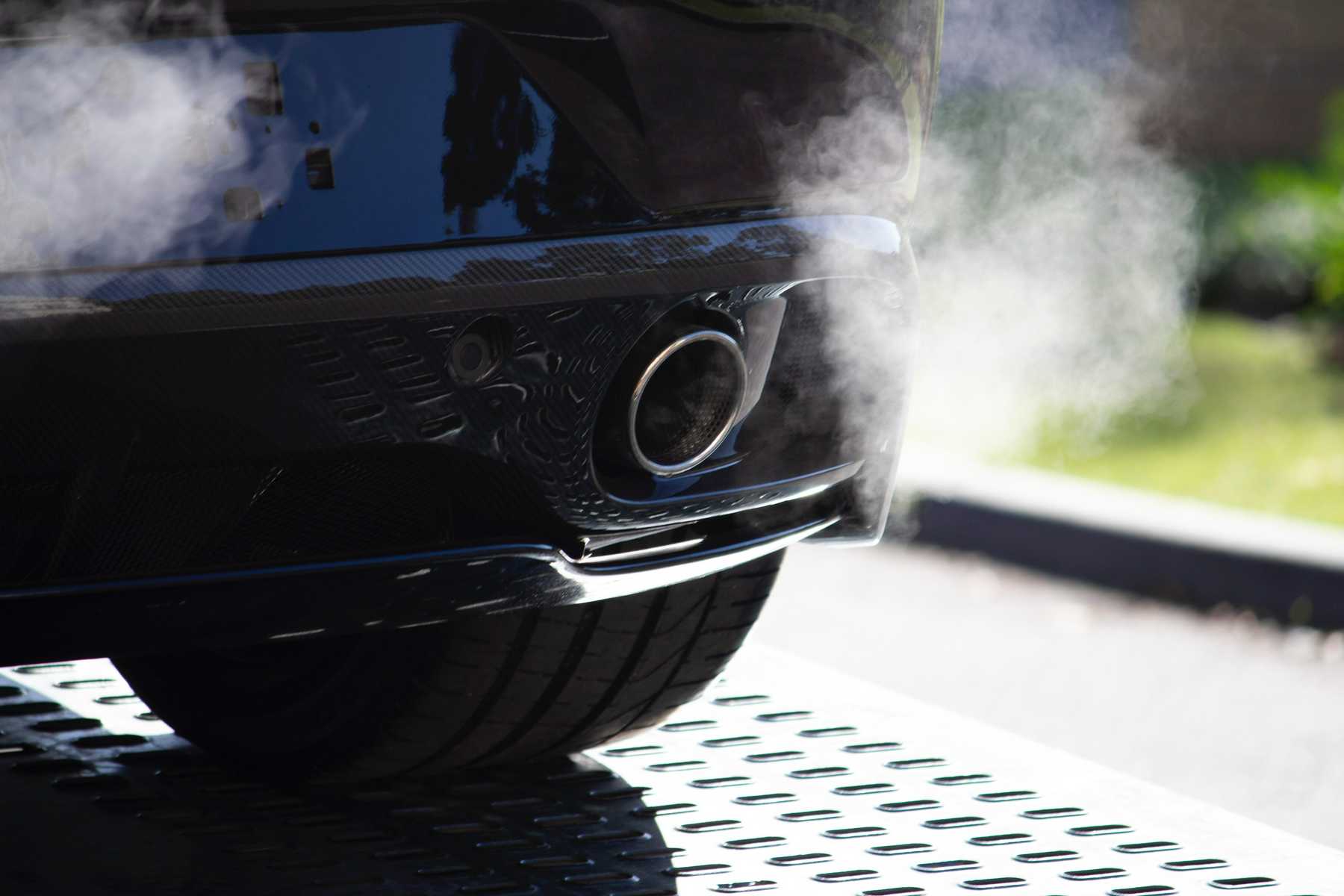Exhaust leaks are a common problem that can play havoc with the performance and fuel efficiency of your vehicle. The exhaust system is designed to remove the unwanted products of combustion, clean them up to increase their environmental acceptability and then allow them to be removed from the vehicle. Modern exhausts also contain an oxygen sensor, that detects the amount of oxygen present in the exhaust fumes. This information is relayed to the engine, prompting changes in operation to optimize performance.
What Does the Exhaust System Consist of?
The exhaust system consists of the following parts:
- Exhaust piston and valve (the part that transports the products of combustion to the manifold).
- The manifold (this carries the gases to the catalytic converter).
- Catalytic converter (this converts a percentage of CO and other toxic emissions into carbon dioxide and water).
- Exhaust pipe (the section of exhaust that carries the gasses to the muffler).
- The muffler (this decreases the noise of combustion and exhaust emission).
- Tailpipe (this part of the exhaust transports the products of combustion to the outside air.
Leaks, holes, or gaps can occur in any part of the exhaust system.
What are the Consequences of an Exhaust Leak?
A leak in any part of the exhaust system can have all sorts of consequences. Some of these include:
- Carbon monoxide poisoning of the driver and passengers. In some cases, a leaking exhaust causes fumes to be directed into the cabin. This can cause disorientation, nausea, and a range of other symptoms, with potentially extremely serious consequences.
- Reduced fuel-efficiency.
- Poor engine performance.
- Excessive noise.
Symptoms of an Exhaust Leak
Some of the symptoms of an exhaust leak include:
- A dragging tailpipe, or sounds of banging from under the vehicle.
- Clicking, ticking, or popping (particularly when the manifold is leaking).
- A roaring sound on acceleration (particularly when there is a leak in the muffler and/or tailpipe).
- Strange, unpleasant smells in the cabin, or feelings of nausea and confusion which disappear rapidly once you leave the vehicle.
- Problems with engine performance and/or fuel-efficiency.
What causes exhaust leaks?
Some common causes of exhaust leaks include:
- An old exhaust system that’s simply reached the end of its natural life.
- Poorly welding during installation and/or a poor quality previous repair.
- Frequent trips over rough terrain.
- Rust and/or corrosion due to frequent driving over poor terrain and/or poor storage when not in use.
How to locate an exhaust leak
In most cases, one of the following methods can be used to locate an exhaust leak:
- Visual inspection – if an exhaust has a visible hole, crack, or area of heavy wear, it’s likely that the leak will be located there.
- Proprietary leak detection product – there are a number of products on the market that you can simply spray onto the exhaust safely. When you start the engine, a color change will indicate the spot where exhaust gasses are escaping.
- Listen for ticking! A leak at the manifold is typified by a ticking noise at the site.
- Soapy water. Some DIY motor enthusiasts swear by spraying the exhaust system with soapy water. When the engine is started, the theory is that the exhaust gasses escaping from the leak will cause the soapy water to foam.
How to fix an exhaust leak without welding?
There’s no doubt that some exhaust leaks are going to need professional attention, as welding will be required. That said, depending on the location of the leak, it’s possible that a replacement part could be fitted that doesn’t involve welding. Some sections of the exhaust pipe, for example, can be replaced by flexible tubing that’s clamped into place to provide an air-tight connection. In addition, there are a number of temporary fixes that can be applied quickly and easily. These can’t take the place of a permanent repair, but may, at least, get you home or tide you over until you can get a professional repair completed.
Epoxy or tape
Small leaks located in the manifold and/or exhaust pipe can be fixed with epoxy or tape. These products can be applied directly to the leak, in line with the manufacturer’s instructions.
An exhaust bandage
An exhaust bandage, as the name suggests, is a strip of material that’s impregnated with a compound that hardens on contact with either water, heat, or air, depending on the brand.
Exhaust bandages often come with aluminum patches that are placed over larger holes, before the bandage is wrapped around the exhaust at the site of the leak.
Clamps
If you want to hold a replacement part of the exhaust system in place without using welding, it’s sometimes possible to do so using clamps.
Band clamps and U-Bolt clamps can both be used to securely fasten a new length of pipe in place. You will likely need to cut away the old pipe section, then clamp the new one into position. Flex pipe works well for this type of repair. In addition to clamping, you may want to apply some form of epoxy to create a bond, then use the clamps for added reinforcement.
Provided the pipe on either side of the new section is in good condition, this can be a relatively long-lasting, high-grade repair.
Note that, unfortunately, in the long term replacement is a more reliable solution to an exhaust problem than a repair. Also, if your exhaust system is in poor condition throughout, a repair is unlikely to work well, as there isn’t good-quality material for it to bond to.
Is DIY Repair a Good Option for Exhaust Leaks?
Exhaust repairs can be a good, short-term solution, particularly for areas such as the manifold and tailpipe. Replacing the muffler can also be achieved without welding.
If you care about your car, regular maintenance and timely repair from a suitable professional is usually the best way to keep it in top condition for as long as possible.
Just like regular car maintenance is important for the health of your exhaust system, it’s also important for your tires. TreadsApp offers a convenient tire subscription service that allows users to ensure reliable fitting and rotation at a time that suits their schedule. TreadsApp provides a mobile fitting service if required, as well as a range of subscription plans to suit any budget.





